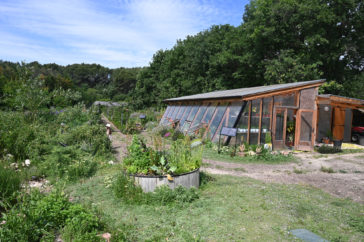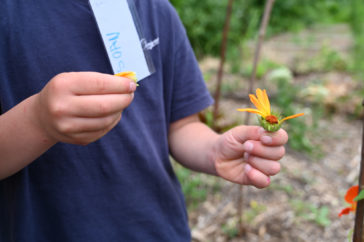At Le Domaine de Fontenille, flowers have a pollinating role in the garden, but they also decorate and are used for their taste.
The presence of flowers is very important, because they promote pollination while beautifying the garden. At Le Grand Potager, flowers are used to make bouquets that ornament the rooms or lounges of the hotel.
Some varieties are also edible and, depending on the season, are brought daily to the kitchens to bring an elegant, fragrant and colorful touch to the dishes prepared by the chef in the restaurants of the estate.
Fresh or dried, edible flowers refine sauces, decorate dishes or flavor pastries. They decorate while offering real taste surprises.
They also have nutritional qualities because the pollen contained in most of them is rich in vitamins and minerals.
The main edible flowers of Le Grand Potager:
Le Bleuet: its intense color and graphic form are appreciated to energize culinary compositions.
Borage: the curious will be surprised by the iodine and crunchy taste of this small pale blue flower rich in omega 6.
Nasturtium: brings a crunchy and slightly spicy taste to the dishes. The leaves, like the flowers, red or orange, contain vitamin C.
Cosmos: its petals or the whole fresh flower can be used in cooking, both in sweet and savory dishes. The petals provide a velvety sensation on the tongue.

Left to right: Bleuet, Borage, Nasturtium and Cosmos
Hemerocallis or “Lily of the day”: is eaten raw or cooked in various culinary preparations. The bright yellow flower of the “Buttercup Palace” variety is the most tasty (because the flowers are not fragrant!).
The Mallow or Malva: is an excellent medicinal plant and fully edible. Gustatively, it goes perfectly with spinach. It is also very nutritious and its flowers are particularly loaded with mucilages with softening effects, able to calm irritations.
Carnation of India: its flavor evokes passion fruit. Rich in antioxidants, it has many medicinal properties.
Marigold (calendula officinalis): has a little peppery taste. It is also rich in vitamin C and colors the plates, with its orange-yellow hues reminiscent of saffron.

Above: Left to right: Hemerocallis, Mallow of Malvan Carnation of India, Marigold





